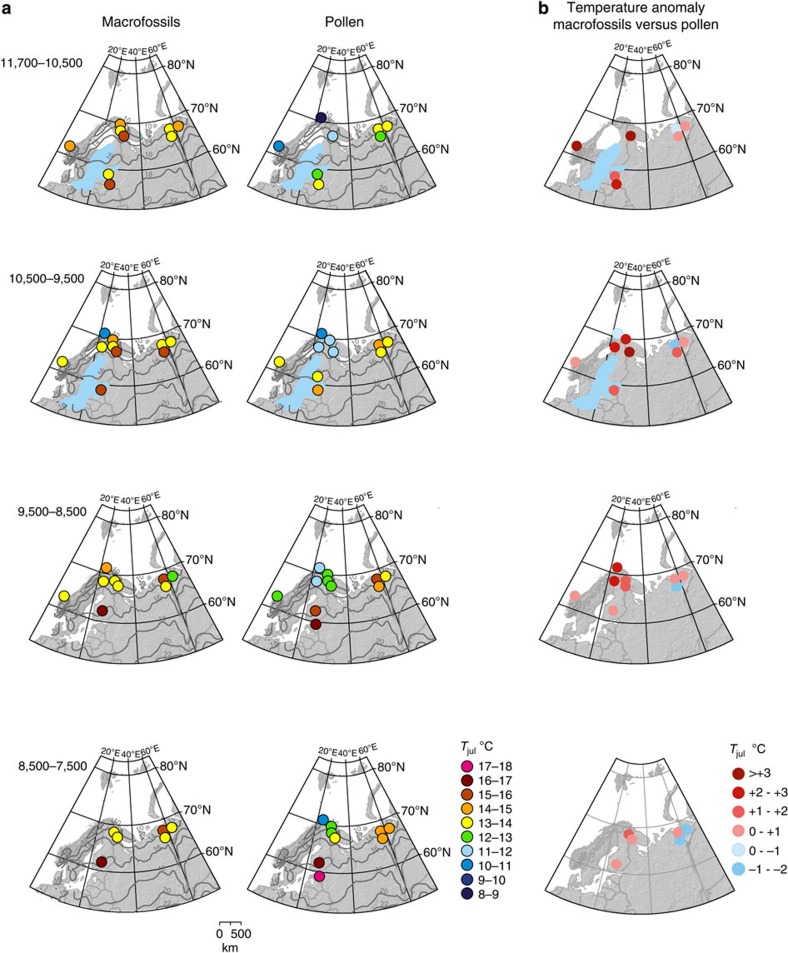Figure 2. A comparison of macrofossil- and pollen-based mean Tjul in northern Europe for the four early post-glacial time windows.
It should be noted that in Russia, the mean s.e. for pollen are somewhat higher at 1.05–1.15 °C, probably because the Russian calibration data set is smaller and the species-response estimates are thus less certain. (a) The spatio-temporal pattern of macrofossil- and pollen- based mean July temperatures (TjulP and TjulM, respectively) in early- and mid-Holocene time windows (Supplementary Table 3). The pollen-based TjulP for each site is calculated as the median of all reconstructed values from fossil samples dating to the time window in question. The macrofossil-based TjulM is the highest site-specific value for the time window in question (see Methods for details). In addition, essential information about the ice-margin position and post-glacial stages of the Baltic Sea are shown (adapted and modified from ref. 38). Modern Tjul isolines (in grey) are also presented. (b) Temperature anomalies between TjulM and TjulP reconstructions (Supplementary Table 3). Red colour indicates positive anomalies where macrofossil-based temperatures are higher than pollen-based temperatures, while blue colour indicates negative anomalies. Note that pale pink and pale blue spots can both indicate no difference (0 °C). However, it should also be noted that due to the nature of TjulM as a lowest estimate for mean Tjul, negative TjulM–TjulP anomalies are difficult to interpret, as it is impossible to verify whether the anomaly is for instance due to a false absence of macrofossils. In contrast, positive TjulM–TjulP anomalies can be more confidently taken to suggest a negative bias in the TjulP values (see Methods for more detailed methodological discussion and data interpretation). If pollen data were not available from the same lake as macrofossil data, the TjulM was compared with TjulP derived from an adjacent lake from the same climate zone.

